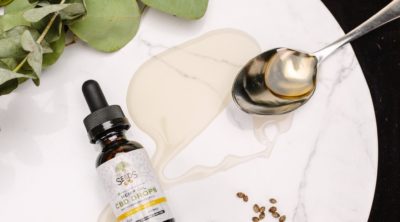
Foot calluses not only look unsightly, these might sometimes cause a lot of discomfort. Following a few self-care measures can help prevent this common foot problem.
The thickening of the outer layer of the skin is medically referred to as hyperkeratosis. The outer layer of the skin contains keratin, which is a tough, fibrous scleroprotein. In case of the foot, the thickening of the skin gives rise to calluses and corns. Calluses are flattened, thickened pads of skin that form due to friction or pressure. On the other hand, helomas or corns form when the thickened pad of skin gets concentrated and takes a conical form. Calluses form when the thick layers of dead skin cells accumulate and harden, in response to the foot being exposed to repeated friction or pressure. These can form on the ball of the foot, heels, and between the toes.
Contributing Factors
As mentioned, the outer layer of the skin hardens when the foot is subjected to pressure or friction for a prolonged period of time. Common causes are:
- Wearing tight or ill-fitting shoes
- Wearing shoes or sandals without socks
- Structural abnormality such as flat feet
- Pressure on feet due to obesity
- Gait abnormalities
- Pressure on the feet due to wearing high-heeled shoes
- High-arched feet
Symptoms
This foot problem can be easily detected by a hard and thick growth, that usually occurs at the ball of the foot. Also, if you are experiencing any pain while lifting weights, then you might suspect the development of this condition. People affected by this problem also experience discomfort on wearing high-heeled shoes or shoes with thin soles.
Treatment
This condition may or may not be a cause of serious concern. Medical help must be sought if the pain is intense, and one experiences pain even while walking. The podiatrist may trim the thickened skin bit by bit. The patient may also be recommended to use salicylic acid patch, but only after smoothing away the dead skin. To avoid the risk of infection, antibiotics may also be prescribed.
For underlying foot deformity, the doctor may recommend the use of orthotics that act as shock-absorbers and redistribute pressure on the foot equally. There’s also the option of using custom-made shoe inserts so as to relieve pressure. The thickening of the outer layer of the skin might be tackled by using pads that contain salicylic acid. This might help dissolve the thickened skin. Surgery might be recommended in severe cases.
Callus Removal At Home
At home, there are certain self-care measures you can follow to soften the hardened skin on the feet. Keep your feet soaked in warm water until the skin softens. It works better if you mix about a cup of apple cider vinegar to the water. Then use a pumice stone and file down the dead skin, but gently. However, diabetics must make use of a wash cloth, as using pumice stone may increase the risk of infection. Also, it is advisable not to use razor blade or the like to cut or trim the callus. It also increases the risk of infection.
Keep your feet moisturized, especially the affected part. This would keep the skin soft and it would also soften the hardened skin of the callus. Equally important is to wear shoes and socks that fit you well. Ensure that the shoes are well-cushioned. In case of people who often develop calluses, wearing orthopedic shoes would help.
It goes without saying that prevention is always better than cure. All you have to do is to ensure that you don’t wear ill-fitting shoes or do anything that makes you susceptible to this foot problem. When you try new shoes, try to wiggle your toes. If you are able to do so, it means the size is proper for your feet. Otherwise, it is not. Always wear shoes that are comfortable.
To conclude, diabetics who are affected by foot calluses must not consider using any kind of medicated pads or lotions. If the callus is not troublesome, then you can follow the aforementioned home remedies to soften the skin. However, if it is causing discomfort, consult a podiatrist for proper treatment.
Disclaimer: The information provided in this article is solely for educating the reader. It is not intended to be a substitute for the advice of a medical expert.


